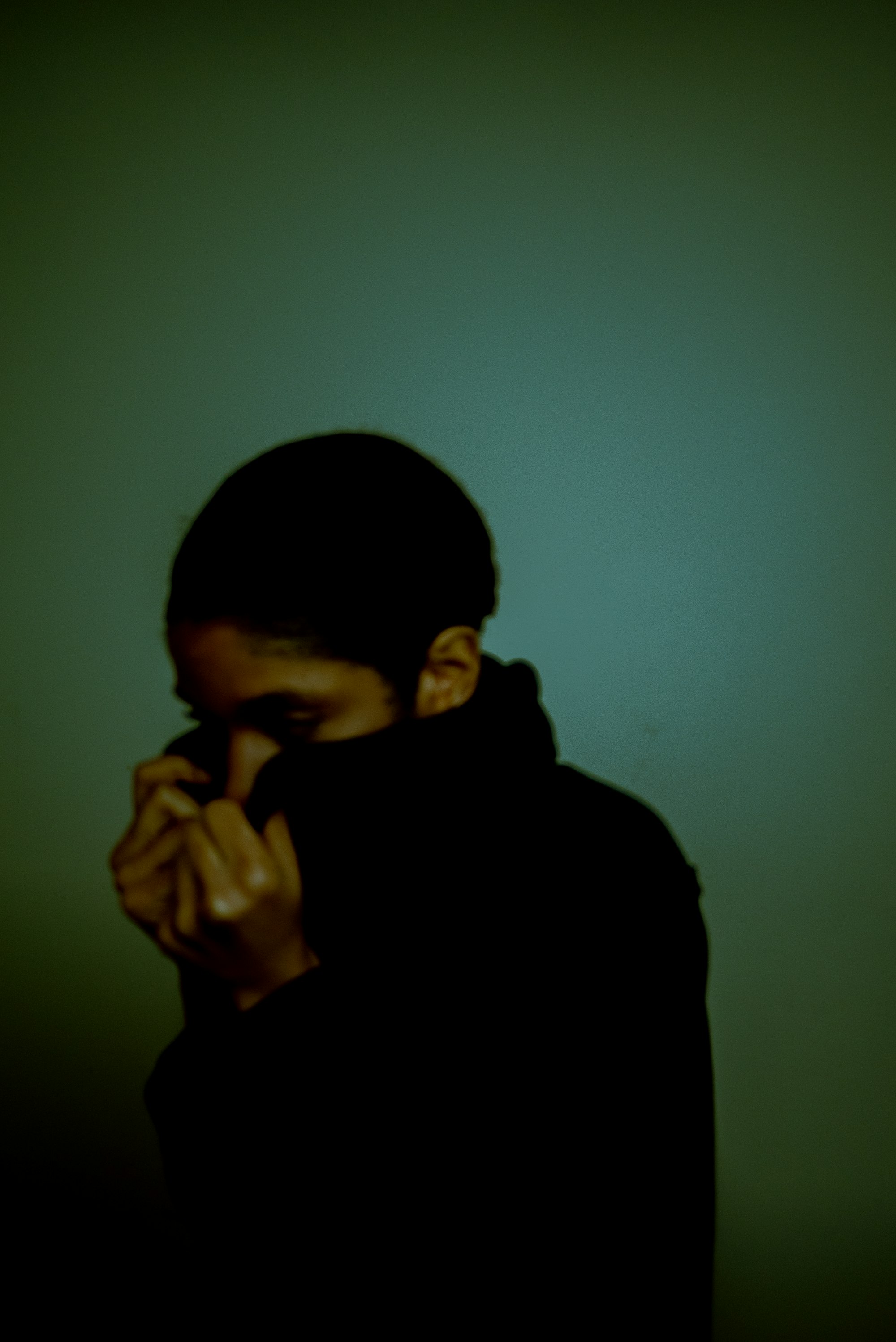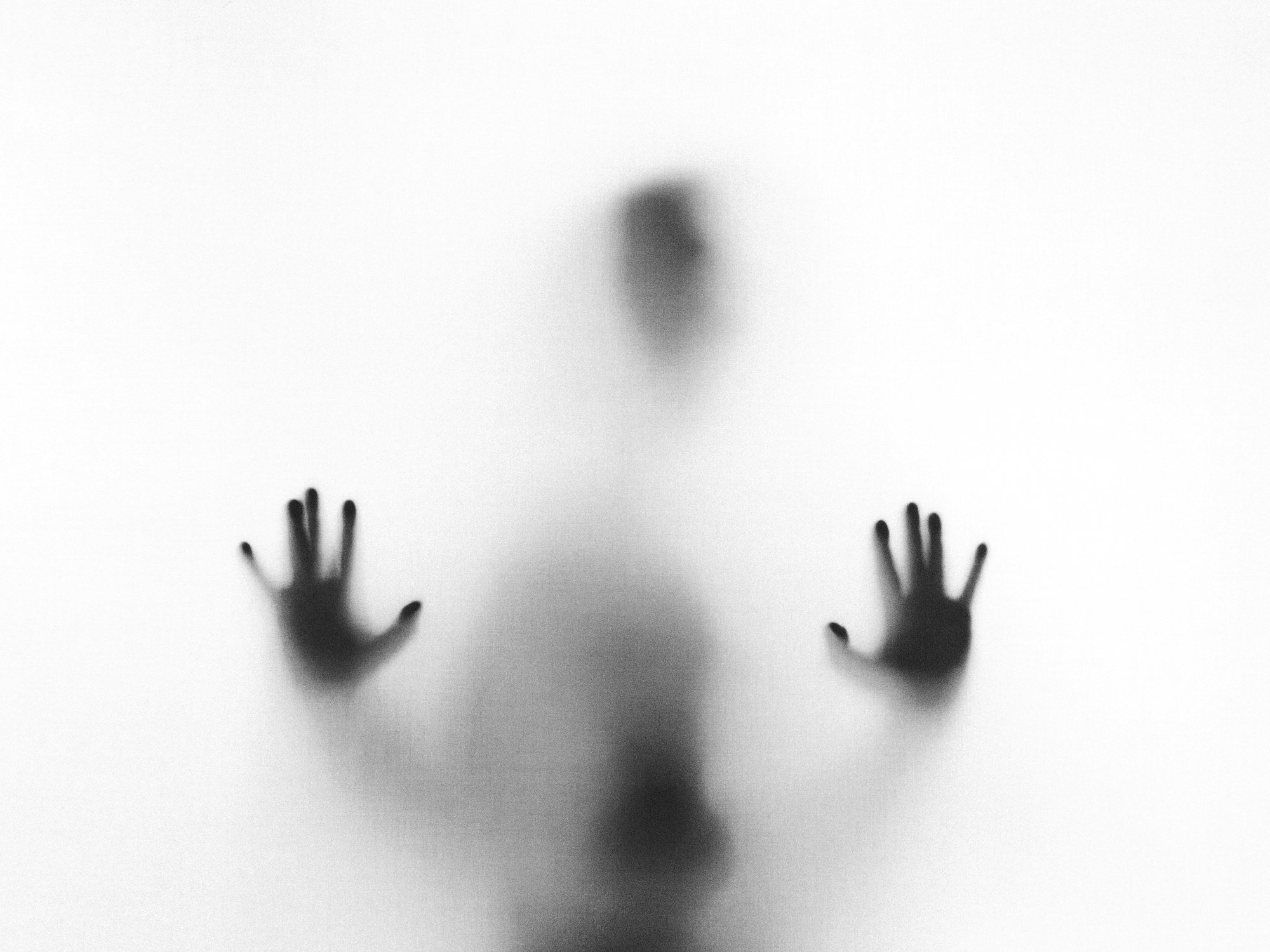Shedding Light on the Shadow Self: Embracing Your Hidden Persona
This blog post discusses the shadow self, the parts of ourselves we try to hide. I describe how meeting someone's shadow self helped me comprehend their personality contradictions. I show you how accepting the shadow self in ourselves and others can lead to enormous personal growth and change.

Introductionary Tale
I'll begin this article with a story that happened to me a few years ago that hooked me to the idea of the shadow self.
The story will inspire you, perhaps, to explain strange events from your past in retrospect, just as it made me finally understand something important about people and myself.

I walk a lot (at least 15,000 steps per day), and as my readers know, I frequently use the same routes at the exact times. It's because I enter a mental flow through homogeneity incredibly quickly and successfully, feeling both comfortable and creative simultaneously.
But going on walks is also an excellent method of making new friends.
So if you often run into the same people, you naturally start a conversation.
I met Irmgard in this manner (name changed). We've known one another because we first connected at a party many years ago. But, through random encounters, we rekindled our conversation.
At some point, we ran into each other virtually every day, me on my morning stroll and she on her way to work or nursery.
As we talked, her personality captivated me more and more:
- Irmgard usually had a smile on her face and was upbeat and open-minded.
- Unlike many folks on the street who typically appear somewhat closed and inward, she was open and inclined towards others.
- She seemed at total peace with herself and was the epitome of serenity.
- On our walks, Irmgard had a knack for spotting small beautiful details that I would have passed by without notice if she didn't tell about it. She seemed as if she was always present at the moment.
- She could always share something, usually mundane occurrences, that revealed a lot about her wonderful personality. She was admirably knowledgeable.
- She had many friends and acquaintances and seemed very social and friendly.
Unfortunately, I'm not very verbose, so it isn't easy to articulate what comes to mind when I think about and remember her. But I think you get the point: She was the polar opposite of me; she possessed all the qualities I lacked, and as a result, I was enthralled by her personality.

There were some strange contradictions, though.
This brings me slowly right into the actual topic of this blog article. I observed subtle, strange nuances of her character that were nearly imperceptible but emanated from her personality from time to time in small doses:
- She never spoke well of anyone and always commented negatively about others when she brought them up: The in-laws live alone and have no friends. The construction workers likely learned nothing in school. The husband's grandmother owned a Thermomix, a circumstance which she finds disagreeable. Her coworkers lack competence. Often it was about the laziness or stupidity of others. I've always been curious about the "why" behind these statements, but whatever. The comments were never more than a passing note. Still, after hearing them repeatedly, I began to question my initial impression that she was generally upbeat. I choose to disregard it nonetheless.
- As I said, she had a pretty big circle of friends by my standards. But all of these friendships, I've realised, were superficial at best, more like a mass of acquaintances. She always preferred making new contacts and expanding her already sizable acquaintances instead deepening existing relationships. Later on, I recognised that she was wary of getting close to anyone and that, when uncertain, she sought shallow new friendships rather than focusing on strengthening the ones she already had. Or rather, it seemed she would leave people if they threatened to get too close to her and see the real her.
- The more often we interacted, the more I became aware of her daily mood swings. A pleased morning, followed by a wholly overwhelmed morning and followed again by another happy morning. It changed day by day without any obvious trigger. I was pretty irritated by her inconsistency, but I didn't know what struggles and influences she dealt with daily, so I assumed she was probably just being affected by outside factors.
- I overheard her ex-boyfriend calling her empathyless. That completely contradicted my impression of her—I thought she was very empathic—and I rejected it as the rantings of someone who was wounded and disappointed. But that still made me wonder if I was missing something.
- I have sometimes noticed minor lies that made me wonder because the truth would not have been sinister from my point of view. Again, I wondered the Why of these needless lies. I figured eventually that she wanted to hide some traits of her. There were also two situations where she firmly claimed not to have said something, even though I clearly remembered it word by word. It sounds crazy, but I was even beginning to doubt my memory because I trusted her to tell the truth and remember better than me.
The way I've condensed it here may make Irmgard's true colours seem very obvious, but you have to understand that these red flags were more of a collection of little things over months and weeks that hardly stood out in the big picture and which I therefore disregarded.

After two years of virtually daily short contact, her behaviour changed dramatically.
Something happened in her life. Marriage, Family, Work, I have no idea. She didn't directly address her stress, so I assume there was another component at play that I was unaware of. And I didn't ask at first because it was none of my business either.
But she gradually grew more withdrawn before becoming even wholly apathetic: While still physically present, she had become utterly reclusive and miserable. She didn't appear to have anything to say and was highly robotic in her demeanour. She seemed to be withdrawn within her outer shell. She often just stared straight ahead, and I began to worry.
This time, it wasn't one of her mood swings but rather a severe situation. It lasted over weeks. At first, I avoided asking her about it directly because I assumed she would tell me if she had something to say. But she didn't, so I just tried to make her feel better and left it at that.
The turning point—and what I'm getting at—came in early March 2021, the final day we talked.
I told her I was worried and wondered what was happening. Of course, I also considered whether I contributed to the issue and needed to keep a distance. Who knows, it might've been.
This day she was incredibly numb and struggling to keep up her facade.
Finally, I asked her what was up
My query seemed to be the straw that broke the camel's back.
She became immediately enraged, exploding and ranting about how it was none of my business and what I cared about anyway since "we weren't friends anyway", and so on. She made the strange accusation that it was my own fault that I cared about her and wanted to know what was happening. She told me I had no reason or right to want to know what was happening with her.

That's just the vocal aspect. More horrifying were her facial mimics.
I want to emphasise how she looked right before she lost it. My eyes went wide as I gazed into her face:
I observed her facial muscles convulsing simultaneously across 3-4 facial personas. It's hard to describe, but her facial muscles tensed in waves, giving her reddened countenance a demonic shape.
In a matter of microseconds, her faces morphed into various personas:
- A terrified child
- A vicious demon
- One persona that looked full of hate & despite
- Some glimpses of despair
- Some glimpses of her usual smile that didn't get through
- ... and some more I can't even describe

It looked like multiple personas were battling with one another to get the upper hand,
The "spiteful devil"-persona, in particular, terrified me, so I was happy when she stated she no longer wanted to see me. It sounded definite and lasting. I, to be honest, was a bit shell-shocked about the rush escalation of the situation, so I just said "okay" and left (for good). We never talked again.
I liked her, and I hated losing her. But on the other hand, this incident scared me so much that I am also glad that I don't have to see her any more and that she wanted it that way of her own accord.
This rare moment of her weakness allowed me to see her true character for a few seconds. To catch a glimpse behind her social mask and the persona she shows to the world.
And what I discovered there - her real character - was the polar opposite of the great personality that fascinated me so much.
In the moments when her social masks slipped away, I saw her Shadow Self.
To this day, I still have no idea what exactly transpired.
I finally understood that, in reality, I was only so hooked by the persona she maintained with a lot of energy and effort to project a favourable image of herself. I learned that her fantastic personality was just a mask she was wearing.
I realised this persona was hiding some repulsive characteristics, eventually giving rise to the strange phenomena and nuances I previously detailed. The fact that something took away her strength to maintain her masks allowed me to see her true colours for a brief moment.
Suddenly all these inconsistencies observed just made perfect sense.
And even better: I now know how to recognise them in other people, which helps me understand them better.
She has to ask for it actively. But she never contacted and avoided me, so I don't think she'll be interested.

What are Shadow Selves?
I knew roughly about Shadow Selves after reading Robert Greene's book "The Laws of Human Nature". Nevertheless, to witness it in person and with such clarity was quite an impressive experience.
Carl Jung, the Swiss psychiatrist and father of analytical psychology, is credited with developing the concept of "shadow selves" in psychology. As described by Jung, the shadow self is that portion of one's personality that lies dormant under the surface. Everything about ourselves, such as our anxieties, wants, and urges, that we try to bury, hide, or ignore falls under this category.
Jung argued that we must face our shadow selves to completely comprehend ourselves, which he saw as an inherent and necessary element of the human psyche. He believed the shadow might be a source of innovation, development, and evil influence if it went unchecked.
Overview of the various Archetypes of Shadow Selves
Unfortunately, I have not had time to immerse myself in the literature here properly. I have seen different ways of categorising archetypes, but it seems there is no one agreed-upon definition.
Here is an example list from ChatGPT that I plan to revise and expand upon after reading the primary sources. They make some rudimentary sense:
- The Victim: This archetype represents the part of us that feels powerless and oppressed by others.
- The Addict: This archetype represents our addictive and compulsive tendencies, whether to substances, behaviours, or relationships.
- The Saboteur: This archetype represents the part of us that undermines our success and happiness.
- The Prostitute: This archetype represents our willingness to compromise our values and integrity for material gain or social approval.
- The Martyr: This archetype represents our tendency to sacrifice our needs and desires for others.
- The Child: This archetype represents our immature and dependent aspects, including our need for nurturing and protection.
- The Rebel: This archetype represents our rebellious and non-conformist aspects, including our desire to break free from authority and tradition.
- The Thief: This archetype represents our tendency to take what we want without regard for others or the consequences.
- The Destroyer: This archetype represents our destructive and aggressive tendencies, including our desire for power and domination.
- The Fool: This archetype represents our naïve and foolish aspects, including our tendency to take risks without considering the consequences.
- The Tyrant: This archetype represents our authoritarian and controlling aspects, including our desire to impose our will on others.
- The Witch: This archetype represents our mystical and magical aspects, including our connection to the unconscious and supernatural.
- The Demon: This archetype represents our dark and sinister aspects, including our capacity for evil and violence.
To better understand and manage our shadow selves, we might start by recognising which archetypes speak to us.

How to Spot Signs of Shadow Selves in Others
Identifying the shadow self in others can be tricky since people typically strive to conceal or dismiss their darker sides. Nevertheless, if you pay attention to specific patterns of behaviour, you can learn to recognise the signs that someone is suffering with their shadow self.
Keep an eye out for these warning signs:
- Behaviour inconsistencies: Those grappling with their shadow self may display erratic patterns of conduct, including mood swings and personality shifts. They could also struggle to keep friendships going and stay out of arguments.
- Shadow people tend to project their bad characteristics and feelings onto others. They may be quick to criticise, judge, and place blame on others.
- Those dealing with their shadow self may try to avoid thinking about or acting upon their problems as a coping mechanism. They may also shy away from personal interactions for fear that their true colours may be shown.
- Substance misuse, compulsive behaviour, and dangerous activities are all examples of self-destructive behaviours in which people struggling with their shadow selves may partake.
- Those who are dealing with their shadow sides may experience feelings of isolation. People could have trouble communicating their feelings and find it hard to empathise with others.
Everyone has a dark side, which is not necessarily a bad thing to acknowledge. The shadow self is an aspect of oneself that, when ignored or unchecked, can lead to negative actions.
It is possible to help others integrate their shadow selves into their conscious selves through understanding and empathy gained from spotting the telltale indicators of the shadow self in others around us.

How to Align with Your Inner Shadow Selves
Although challenging and unpleasant, aligning with your inner shadow self can lead to profound personal growth and change. Follow these guidelines to understand better and confront your dark inner side:
- Learn to see and accept your darker side. To begin, take stock of the parts of yourself that you frequently ignore, suppress, or otherwise choose to ignore. This is a challenging but necessary part of the procedure.
- Accept and embrace your shadow self. Once you have identified your shadow self, it is essential to accept and embrace it. You have to accept that these characteristics are inherent to your identity.
- Integrate your darker side into your life. You must face your dark side head-on and bring it into the light before you can do any real work. Writing in a diary, counselling, or thinking things through can help.
- Be brave and accept your dark side. Integrating your shadow self into your more conscious self is the purpose of dealing with it. This involves accepting who you are, even the elements you've denied or rejected in the past.
- Practice self-compassion. It's important to be kind to yourself and take care of yourself as you work with your shadow self because doing so can be difficult and emotionally taxing.

Benefits of integrating your darker side into your life
I can only share my personal experiences. I've been paying more attention to my inner shadow selves for the past two to three years and occasionally letting the world see them.
When I was younger, I used to layer on more filters on top of what I believed before acting out of fear of violating social conventions or losing someone's favour.
Nowadays, I let it (mostly) all out. Although it's still not entirely unfiltered, it's enough to start experiencing the advantages:
- I used to believe that attending social gatherings stressed me out because I'm an introvert. Today I see that it was also because maintaining my masks required a lot of energy. I can enjoy social interactions much more now that I am myself.
- Never once did someone express anger at my genuine attitude. Contrarily, I've discovered that others value this authenticity, even if they disagree with some of my words and viewpoints.
- I use less mental energy coming clean with myself, which gives me more mental willpower for my projects, tasks, and plans.
- Without exerting effort, I am considerably calmer and more collected.
- I now understand the "why" behind many remarks and behaviours of other people and can empathically adjust to them, which has boosted my social intelligence.
There may be further advantages, but these are the ones I have personally noticed.

Conclusion
In conclusion, incredible personal growth and change can result from seeing and accepting the shadow self in ourselves and others. Although it might be difficult and emotionally draining, embracing our darker sides can positively affect our social intelligence, authenticity, and mental and physical health.
We can assist others in integrating their shadow selves by detecting the warning signs of the shadow self in others and demonstrating understanding and empathy.
For this integration process to occur, accepting our shadow selves and cultivating self-compassion are crucial first steps.
Ultimately, we can become more authentic, sympathetic, and contented by identifying with our inner shadow selves.
Feel free to add tips and thoughts to this page's comment section, Twitter or LinkedIn!
Best regards,
-- Martin from Deliberate-Diligence.com

Discussion